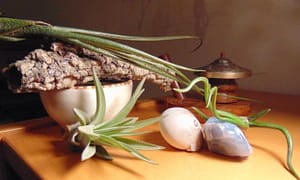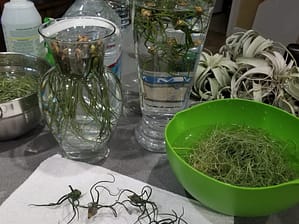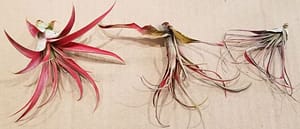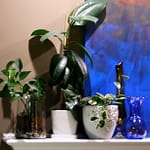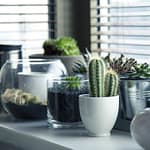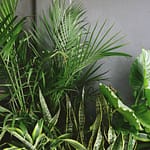The tillandsia bulbosa is an air plant native to the tropical regions of Guatemala, Belize, and Central America. This plant is also found in parts of South America and is in the Bromeliad family.
Naturally, air plants grow on trees (epiphyte) or on rocks (lithophyte), not in soil. It absorbs it nutrients from rain water through its thick, spirally leaves. There are many bulbosa varieties. A few are:
- bulbosa brasiliensis
- bulbosa picta
- bulbosa Belize
- bulbosa Guatemala
Also, there are many cultivars, too many to name in this article.
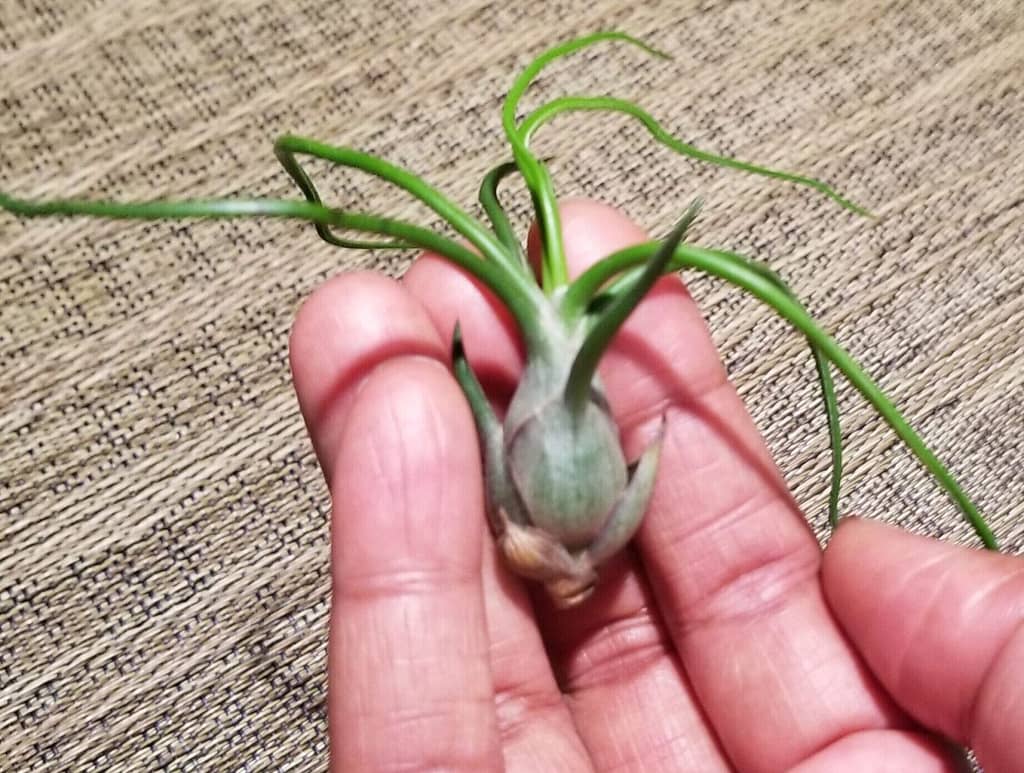

Care
When caring for any plant, it is best to mimic its natural habitat in your home as much as possible. This can certainly be challenging. Although drought tolerant and easy to grow, the bulbosa is a tropical plant that need at least 50% humidity or more.
You will have success when considering the following care tips.
Watering
The bulbosa air plant prefers higher humidity but doesn’t require constant watering.
For watering any tillandsia, rain water is optimal. Fresh water aquarium or pond water also provides a good source of nutrients. You can use spring, tap, or filtered water. Add a little liquid fertilizer formulated for air plants, orchids, or bromeliads to the tap or filtered water once every other 2 or 3 waterings during the Spring and Summer. You don’t need to add it each time your water.
Note: Avoid using distilled water on any tillandsia. Because it has zero nutrients, the air plant will not survive.
Watering methods:
Choose either methods that works best for your plant and home environment situation.
- Shower or rinse – give your air plant a quick shower or rinse once per week.
- Dunk – briefly dunk this air plant in bowl or sink of water once per week for a few seconds.
After a shower or dunk, shake off excess water and allow the plant to completely dry on its side or upside down in an area with good air circulation.
Note: It is important to allow excess water to drain from leaf crevices and dry completely. Too much moisture will cause rot.
Note: Make sure that your home has good air circulation to allow you plant to dry properly. If you have your air plant in a terrarium, allow you plant to fully dry before placing it back into the terrarium.
Lightly mist at least once every other day between watering. The of misting depends on humidity levels in your home.
Light
The bulbosa needs bright indirect light. Find the brightest space in your home for this air plant.
Some direct morning sunlight is okay because its gentle and not intense. Too much direct sun will deplete the plants moisture and dry out.
Artificial light is a good alternative if you don’t get a lot of natural bright light. Use a broad spectrum grow light for approximately 10 to 12 hours. These lights are energy efficient and won’t run up your electric bill.
Humidity
Because the bulbosa is native to tropical regions, humidity is necessary this plant (50% or more). If you have trouble increasing humidity levels in your home, you can display your air plant in an open terrarium or use a cool mist humidifier.
Substrate
Tillandsia plants are quite versatile when displaying them around your living space. You can display them anywhere and on any natural surface. Ideal materials to display your air plant on are natural rocks or pebbles; virgin drift wood, bark, cork, dried cholla wood; unfinished sea shells; or natural burlap fiber – to name a few. Avoid using soil or any surface with an artificial finish is toxic.

